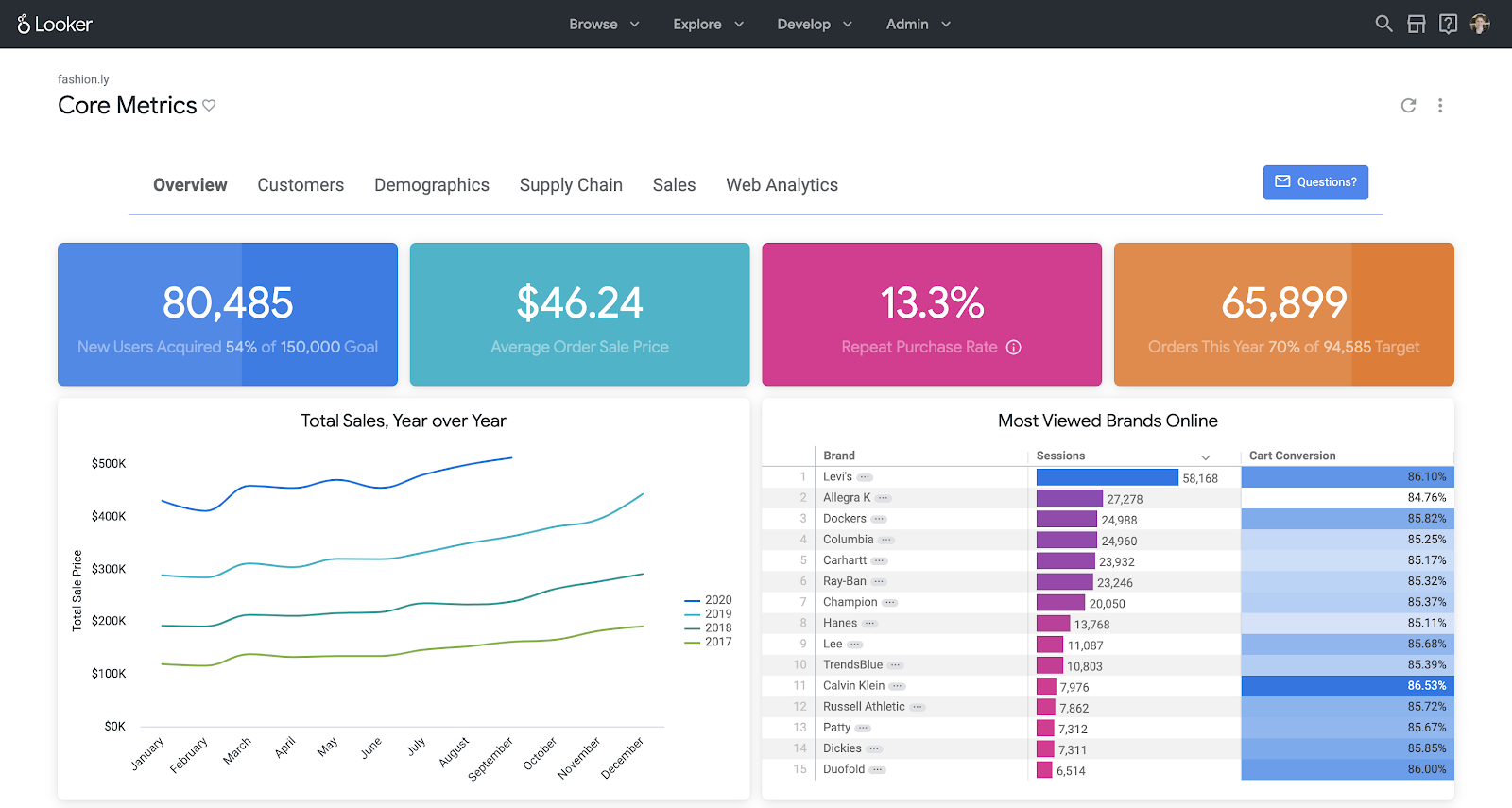Alternatives to Domo
1. Amplitude
+Pros
- Sophisticated behavioral analytics capabilities that outperform traditional rule-based approaches .
- Real-time experimentation features deploy changes through feature flags without developer dependency .
- Documented customer success with conversion improvements ranging from 9-46% .
-Cons
- Significant implementation complexity requiring dedicated technical teams .
- Non-technical users frequently describe chart customization as challenging .
- Minimum annual commitments exceeding $50,000 for advanced features .
One highlighted feature and why it's amazing
Amplitude's core product capabilities center on behavioral event tracking combined with AI-driven predictive analytics, creating a comprehensive platform for customer journey optimization .

Another highlighted feature of why it’s amazing
AI automation features represent a significant differentiator, designed to detect friction points, run experiments, and deploy optimization solutions with reduced manual intervention .
2. Klaviyo
+Pros
- Unified marketing automation combining email, SMS, and review management with AI-powered personalization .
- Deep Shopify integration providing automated data sync and behavioral tracking .
- Proven ROI delivery across multiple customer implementations .
-Cons
- Implementation complexity despite moderate technical ratings .
- Active profile billing methodology can penalize businesses with large but inactive customer databases .
- 90-day 'suppression jail' limits reactivation of unengaged contacts .
One highlighted feature and why it's amazing
Transforms audience building from manual rule configuration to natural language interaction, enabling complex behavioral targeting without requiring technical expertise .

Another highlighted feature of why it’s amazing
Generate personalized content while maintaining brand voice consistency through machine learning models trained on existing brand communications .
3. Looker
+Pros
- Centralized metric definitions through LookML
- Multi-cloud architectural flexibility
- Embedded analytics capabilities through comprehensive APIs
- Proven scalability with enterprise-scale requirements
-Cons
- Technical complexity requiring dedicated data engineering resources
- Learning curve challenges for non-technical users
- Higher cost structure compared to alternatives
One highlighted feature and why it's amazing
Enables centralized definition of business metrics that ensure consistency across all reporting and analytics .

Another highlighted feature of why it’s amazing
Supports BigQuery, Snowflake, Redshift, and Azure Synapse, providing architectural flexibility for organizations with diverse data environments .
Other Alternatives
Microsoft Power BI
Mixpanel
Qlik Sense
How We Researched This Guide
About This Guide: This comprehensive analysis is based on extensive competitive intelligence and real-world implementation data from leading AI vendors. StayModern updates this guide quarterly to reflect market developments and vendor performance changes.
216+ verified sources per analysis including official documentation, customer reviews, analyst reports, and industry publications.
- • Vendor documentation & whitepapers
- • Customer testimonials & case studies
- • Third-party analyst assessments
- • Industry benchmarking reports
Standardized assessment framework across 8 key dimensions for objective comparison.
- • Technology capabilities & architecture
- • Market position & customer evidence
- • Implementation experience & support
- • Pricing value & competitive position
Research is refreshed every 90 days to capture market changes and new vendor capabilities.
- • New product releases & features
- • Market positioning changes
- • Customer feedback integration
- • Competitive landscape shifts
Every claim is source-linked with direct citations to original materials for verification.
- • Clickable citation links
- • Original source attribution
- • Date stamps for currency
- • Quality score validation
Analysis follows systematic research protocols with consistent evaluation frameworks.
- • Standardized assessment criteria
- • Multi-source verification process
- • Consistent evaluation methodology
- • Quality assurance protocols
Buyer-focused analysis with transparent methodology and factual accuracy commitment.
- • Objective comparative analysis
- • Transparent research methodology
- • Factual accuracy commitment
- • Continuous quality improvement
Quality Commitment: If you find any inaccuracies in our analysis on this page, please contact us at research@staymodern.ai. We're committed to maintaining the highest standards of research integrity and will investigate and correct any issues promptly.